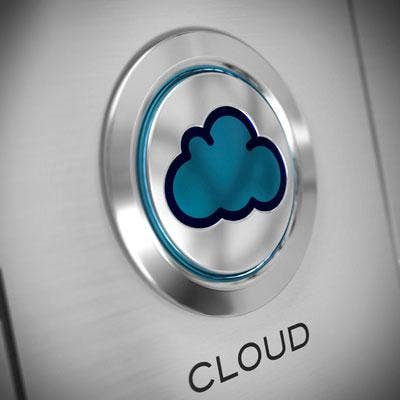The State Of Salesforce: 11 Insights Gleaned From Bluewolf's Annual Report

State of Salesforce
Salesforce continues to dominate the CRM market as it expands its cloud-based software with new clouds, app-building tools and analytic platforms. For the past five years, one of the San Francisco-based software developer's largest channel partners, Bluewolf, has surveyed Salesforce customers to gain a better understanding of successful business practices with Salesforce and to share those insights across the ecosystem.
This year, in the second and third quarters, Bluewolf polled more than 1,500 Salesforce customers. Employees of all functions and titles responded. Nearly half the businesses polled had less than 500 employees, and 32 percent had more than 3,000 employees.
"This year's The State of Salesforce Report explores the latest trends in data, cloud governance and mobile, and reveals how consistent innovation of Salesforce drives business success," said Eric Berridge, Bluewolf's CEO.
"With a better understanding of how to best use Salesforce to deliver a better employee experience, you'll be able to inspire greater productivity in an energized and committed employee culture," according to Berridge.

A Difference A Year Makes
Of all the stats to come out of the latest State of Salesforce survey, the one that perhaps stands out the most: two-thirds of the companies polled believe Salesforce delivers more value today than it did a year ago.
One reason, the survey suggests, is a greater focus on enhancing the experience of the employees who are the true end users of the various Salesforce clouds.
Of the professionals surveyed, 59 percent said it's easier to use their company's Salesforce implementations today than it was a year ago. And 62 percent said that when their company moves a process into Salesforce, it generally improves.
Three-quarters of respondents said Salesforce makes it easier to do their jobs.

The Employee Experience
Seventy percent of respondents said they have to enter the same data into multiple systems to do their jobs; 59 percent said there's a part of their job that would be easier if they were able to complete it in Salesforce.
It seems companies are finally taking notice of how often their employees are wasting time. The resulting focus on employee experience represents a major shift in how the cloud-based software is being deployed across businesses.
A third of those polled said an employee-facing initiative is one of their top three priorities for the coming year.
"Investing in employees is an investment in a company's bottom line," according to Bluewolf.
Companies should first prioritize simplifying the most time-consuming tasks in Salesforce to make employees more efficient, freeing them to spend more time with customers, Bluewolf suggests.

Innovation is Becoming Commonplace
Bluewolf found that companies are getting better at releasing enhancements to their own Salesforce environments.
Last year, 44 percent of companies polled updated their Salesforce instance at least monthly. This year, 64 percent of the companies follow that pace.
And the number of companies that make changes every week has tripled.
" To be amongst the best, release cadence must be frequent and high-quality," Bluewolf notes.

Governance is Key
To ensure successful updates, "the best companies have an established cloud governance board and have implemented application lifecycle management (ALM) tools in order to evaluate user suggestions, manage releases and provide training to affected users," the report states.
Companies with governance boards and ALM tools are three times more likely to attribute revenue growth to their use of Salesforce, and twice as likely to believe the software improves the customer experience.

Data As Obstacle
Nearly half of the respondents are having problems reconciling data from different sources, including from other organizations.
About three-quarters of companies that derive business insights from Salesforce data also struggle with integration and data quality.
Bluewolf said integration challenges are the top barrier to deriving insights from data stored in Salesforce clouds.
Companies understand the importance of remedying these challenges—more than two-thirds of respondents will be increasing their analytic spend in the coming year.

Analytics As Solution
This past year saw major growth in analytics and reporting innovation, Bluewolf states, attributing that trend to the introduction of the Salesforce Analytics Cloud.
"While the best companies feel confident in their analytical skills and visualization tools, most wrestle with the task of assembling and cleaning data used for reporting," according to Bluewolf.
"For most employees, reporting is not only a daily task, but often the most time-consuming activity. Clean, easily accessible data reduces the time it takes to produce reports, not only improving productivity and efficiency but increasing the impact of analytical data on a company's business outcomes," the report notes.
More than 80 percent of respondents said their most important sales strategy in the coming year will be increasing their use of predictive analytics.

Mobility Rules
Sales teams work better when they can work away from their desks. But not all companies have gone far in their mobility journey.
Of the respondents, 61 percent said it's still difficult to access Sales Cloud from a mobile device.
Almost 80 percent of respondents said an important sales strategy in the coming year will be making it easier for sales agents to work on mobile devices.
Ninety percent said improving the user experience of their mobile apps is also one of their most important sales strategies; 47 percent describe it as "extremely important."
"To connect and engage with customers, salespeople need the right tools to perform tasks in the field," the report states, citing important use cases like providing a quote in real time, having a client sign electronically, or taking mobile notes.

Empowered Agents
The majority of companies using Service Cloud are making good progress in improving the agent experience, which is the key to success when using that product, according to Bluewolf.
Service Cloud customers are overcoming one of the service center's biggest pain points: too many systems.
"By integrating or replacing multiple systems into Service Cloud, companies can give agents easy access to the right knowledge and create a strong foundation for customer self-service—all of which can lead to improved agent productivity, increased visibility and a more satisfying customer experience," the report notes.

Community Cloud
Bluewolf noted that adoption of the Salesforce Community Cloud introduced this year is rapidly spreading, especially among companies already using other Salesforce clouds.
Of companies that have purchased Service Cloud, Sales Cloud and Marketing Cloud, 36 percent also have purchased Community Cloud. Another 21 percent of them plan on adding the community building platform in the coming year.
"Community Cloud is a unique product because it can serve many different purposes within an organization," Bluewolf notes. Not only service, sales and marketing departments, but also customers and partners, can benefit from Community Cloud.
And the community building platform pays off.
"Companies with Community Cloud are more likely to cite cost reduction and productivity gains as measurable business outcomes attributed to their use of Salesforce," according to Bluewolf.

Customer Engagement Translates To Greater Spend
"As more companies begin to recognize the value of Salesforce as a customer engagement platform, their overall investments in Salesforce and in multiple clouds continue to grow," the report states.
Almost two-thirds of Salesforce customers plan to increase their spending in the coming year, and 11 percent plan to do so by more than 50 percent.
Almost half of the customers polled are buying two clouds, and almost a quarter have invested in three or more.

AppExchange
Salesforce customers continue to rely on AppExchange, the online Salesforce business application store, to secure the software they need.
In the past year, the number of companies using five or more apps almost doubled, according to the Bluewolf study.
Regardless of the number of apps used, Bluewolf offers two recommendations to get the most out of investments in the AppExchange:
1. Prepare for Salesforce Lightning—the new visual point-and-click tools for building applications.
2. App developers should thoroughly document changes as they customize their apps to ensure they don't break down functionality and interrupt workflows.